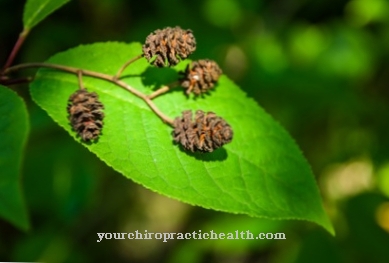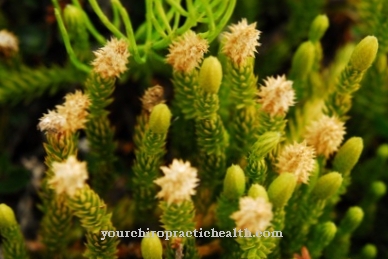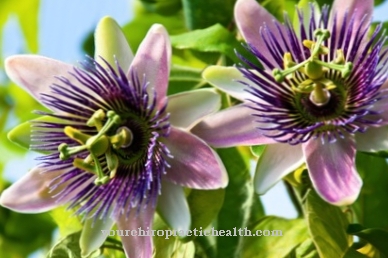Occurrence and cultivation of ylang-ylang

Ylang-ylang is an evergreen tree that grows particularly quickly and can reach heights of 25 meters. The bracts of the flowers are tongue-shaped and long. Six leaves always surround a flower. The inner bracts are green-yellow in color. The flowers of the ylang-ylang have an intense, sweet and beguiling scent. The plant is native to both Indonesia and the Philippines.
Young trees show white, later yellowish-green flowers. Only when the tree is older do the flowers turn orange-red. Especially at night, the ylang-ylang flowers give off a strong and exotic scent. In this way they attract a large number of moths, which are helpful for pollination. The flowers are relatively large and can be harvested every day. They have to be processed quickly to obtain ylang-ylang oil.
In addition, the so-called cananga oil can be produced in a second distillation process. The flowers and the oil of ylang-ylang are also used in folk medicine in Asia. Ylang-ylang is now grown in numerous regions for the purpose of oil extraction, such as Madagascar, Java, Sumatra, Haiti and the Comoros.
Effect & application
The ylang-ylang oil in particular is well known and very popular. Since the 19th century it has developed into a coveted fragrance oil that is used, for example, by the perfume industry. For example, the famous perfume Chanel No.5 contains ylang-ylang. The scent of the flowers is also used in aromatherapy, where it is equally relaxing, calming and stimulating the senses.
In addition, the scent of Ylang-Ylang is said to have an aphrodisiac effect. The oil can also be used as a cosmetic product, as it has a balancing effect on all skin types in combination with other high-quality oils. Numerous flowers are required to make ylang-ylang oil. 50 kilos of flowers produce around one liter of essential oil by steam distillation.
The ylang-ylang oil is usually distilled in fractions. Different essential oils can thus be obtained every few hours. In combination, these are more nuanced than the individual oils. Ylang-ylang oil has a yellowish to light orange color. The scent is floral, sweet and has similarities to the smell of jasmine flowers.
However, the scent of Ylang-Ylang is significantly heavier and has an oriental and exotic note. Some people perceive it to be almost narcotic. It should always be dosed discreetly, otherwise it is too intense. Ylang-ylang oil available specifically for this purpose can also be used internally by ingesting it orally. To do this, one to three drops of the oil are taken together with honey or sugar or dissolved in alcohol.
This dose is consumed three times a day. It should be noted that the intake should be discussed in advance with a doctor. The ylang-ylang oil can also cause side effects, especially if the dosage is too high. Then, for example, nausea and headaches can be the consequences.
Importance for health, treatment & prevention
Ylang-Ylang has numerous positive effects on human health and mental state. As a result, it can be used in various areas of application. The scent of ylang-ylang has a balancing and relaxing, euphoric and aphrodisiac effect on the soul. The fragrance oil has a calming effect on the body, especially with regard to pulse rate and breathing. It also has an antispasmodic effect.
The oil can also have an antidepressant and antibacterial effect and lower blood pressure. Fragrance mixtures with ylang-ylang are particularly suitable for evening relaxation. In traditional medicine and aromatherapy, the scent of ylang-ylang is primarily used for states of tension. It is therefore suitable for nervousness, tension, sleep problems, stress and pressure to perform as well as anxiety and depression.
The oil can also provide relief from high blood pressure, palpitations, or shortness of breath. It can also be used for hyperventilation and intestinal infections as well as for skin care. This is where the oil can develop its moisturizing effect.
Another area of application of ylang-ylang is sexual aversion and impotence. The scent of the oil has an erotic effect and can therefore also help with frigidity. In India, for example, ylang-ylang oil is used as a love oil, and corresponding customs also exist in Indonesia. The flowers of the ylang-ylang are sprinkled on the bed of the bride and groom on the wedding night.
In addition, ylang-ylang has an antifungal and antiseptic effect and can even increase the concentration. The oil is also said to have a positive effect on blood sugar. It is also said to provide relief from menstrual cramps and premenstrual syndrome.
It can also help reduce nervous head pain. Overall, the potential uses of ylang-ylang are very diverse. In aromatherapy in particular, the full potential of the beguiling scent can develop, which strengthens and stimulates.

























.jpg)


